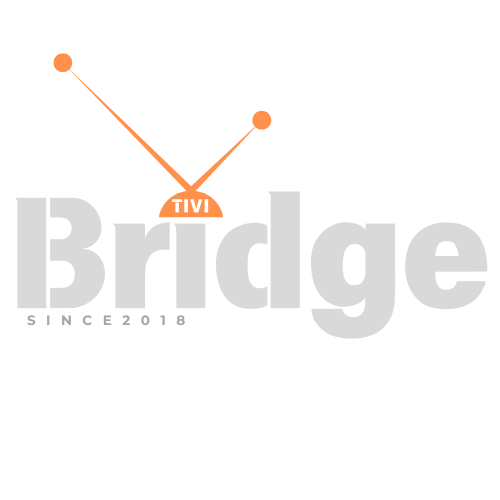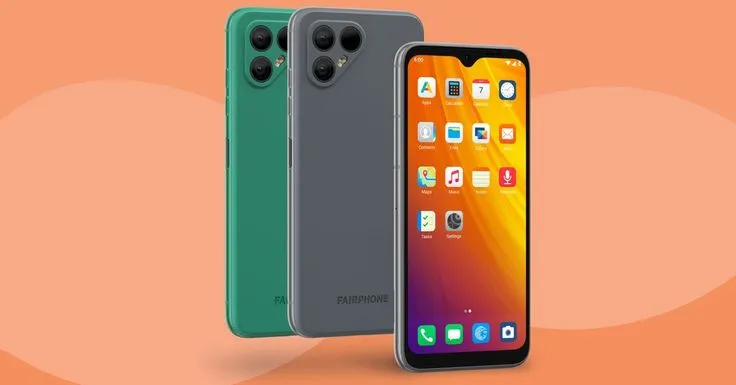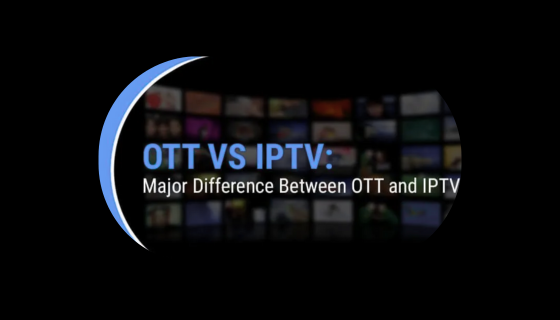Difference Between IPTV and OTT
Difference Between IPTV and OTT – In today’s digital streaming landscape, two technologies stand at the forefront of how we consume media: IPTV and OTT. Understanding the difference between IPTV and OTT is crucial for consumers looking to make informed decisions about their entertainment options. While both deliver content over the internet, they operate on fundamentally different principles and offer unique advantages for various viewing preferences.
Whether you’re a sports enthusiast considering sport IPTV services, a tech-savvy viewer exploring smart IPTV options, or simply trying to determine which streaming method best suits your needs, this comprehensive guide will break down everything you need to know about the difference between IPTV and OTT platforms in 2025.
Understanding the Fundamentals: IPTV vs. OTT Defined
Before diving into the specific differences, let’s establish clear definitions of both technologies.
What is IPTV?
Internet Protocol Television (IPTV) delivers television content over Internet Protocol (IP) networks. Unlike traditional broadcast methods that push all channels simultaneously, IPTV sends only the specifically requested content to the viewer. This creates a more efficient, interactive viewing experience where users can access:
- Live television broadcasts
- Time-shifted programming (catch-up TV)
- Video on demand (VOD) content
IPTV typically operates through dedicated networks managed by service providers, often utilizing set-top boxes that connect to your television. Many telecommunications companies have incorporated IPTV technology into their service offerings, creating bundled packages that include internet, phone, and television services.
What is OTT?
Over-The-Top (OTT) content refers to media delivered directly to viewers via the internet, bypassing traditional cable, broadcast, and satellite television platforms. The term “over-the-top” refers to how these services travel over the internet infrastructure without requiring a specific network operator to deliver the content.
Popular examples include:
- Subscription services like Netflix, Amazon Prime Video, and Disney+
- Free platforms like YouTube and Pluto TV
- Live streaming services like YouTube TV and Sling
OTT platforms typically work across multiple devices through apps or web browsers, offering flexibility in how and where users consume content.
Key Technical Differences Between IPTV and OTT
When examining the difference between IPTV and OTT, several technical distinctions become apparent:
1. Network Infrastructure
IPTV: Operates on closed, managed networks owned by specific service providers. These controlled environments allow for:
- Guaranteed quality of service (QoS)
- Consistent bandwidth allocation
- Reduced buffering and latency
OTT: Travels through the open internet, making it accessible to anyone with an internet connection but potentially subject to:
- Variable streaming quality
- Buffering during peak usage times
- Dependency on user’s internet speed and reliability
2. Content Delivery Methods
IPTV: Utilizes multicast technology for live content, where a single stream is sent to multiple viewers simultaneously. This efficient approach:
- Reduces network congestion
- Enables high-quality live broadcasts
- Works particularly well for sport IPTV services where synchronous viewing is important
OTT: Primarily uses unicast streaming, where each viewer receives an individual content stream. This approach:
- Allows for personalized content recommendations
- Creates flexibility for on-demand viewing
- May struggle with simultaneous mass viewing events
3. Device Compatibility
IPTV: Traditionally requires specific hardware like set-top boxes, though modern smart IPTV systems have expanded compatibility. Users may need to utilize IPTV m3u file playlists to access content on various devices.
OTT: Designed for multi-device accessibility through apps and browsers, working on:
- Smart TVs
- Streaming devices (Roku, Apple TV, Fire TV)
- Mobile phones and tablets
- Gaming consoles
- Computers
This flexibility represents one of the most notable aspects of the difference between IPTV and OTT services from a consumer perspective.
Looking for Premium Channels, Sports, and 4K Streaming?
Don’t miss out on these top-rated IPTV services – all at unbeatable prices!
🔥 TiviBridge – Ideal for sports lovers & international content
🎬 Iptvbridge – Perfect for live TV, movies & entertainment
💰 TiviPlanet – Best value for budget-conscious streamers
🚀 Start Your IPTV Business Today!
Get instant access to a powerful Reseller IPTV Panel with competitive pricing, advanced features, and 24/7 support. Join TiviBridge and grow your own IPTV empire with ease!
👉 Start your FREE trial now and elevate your viewing experience with seamless, high-quality streaming!
User Experience: How IPTV and OTT Differ
Beyond technical distinctions, the difference between IPTV and OTT significantly impacts the end-user experience:
1. Content Discovery and Navigation
IPTV: Often maintains a traditional TV-like interface with:
- Channel numbers
- Electronic program guides (EPGs)
- Familiar remote control navigation
OTT: Features more modern, app-based interfaces with:
- Algorithm-driven content recommendations
- Search functionality
- Content categories and curated collections
2. Viewing Options and Flexibility
IPTV: Excels in live content delivery, making it preferred for:
- Live sports events
- News broadcasts
- Special live events
This strength makes sport IPTV particularly popular among sports enthusiasts looking to watch online sports 2025 events as they happen.
OTT: Primarily designed for on-demand content, offering:
- Binge-watching capabilities
- Start/stop flexibility
- No fixed programming schedule
3. Pricing Models
IPTV: Typically follows subscription models similar to traditional cable:
- Tiered channel packages
- Premium add-ons
- Often bundled with other telecommunications services
The reseller IPTV market has created additional pricing structures where smaller providers offer specialized packages at competitive rates.
OTT: Features diverse monetization approaches:
- Subscription-based (SVOD)
- Advertisement-supported (AVOD)
- Transactional (TVOD) for one-time rentals or purchases
- Hybrid models combining multiple approaches
Content Availability: IPTV vs. OTT
Content libraries represent another fundamental difference between IPTV and OTT services:
1. Content Types
IPTV:
- Stronger focus on linear TV channels
- Live programming
- Local content and regional channels
- Special event broadcasts
OTT:
- Expansive on-demand libraries
- Original programming
- Global content offerings
- Niche genre specialization
2. Exclusivity and Licensing
IPTV: Often includes:
- Regional broadcast networks
- Local sports teams
- International channels through specialized packages
- Traditional television programming
OTT: Features:
- Platform-exclusive original content
- Licensed movies and shows with rotating availability
- Special interest programming for specific demographics
- User-generated content on some platforms
Finding the best IPTV provider to watch all channels can be challenging precisely because of these licensing differences, as no single service typically offers every channel or program.
Accessibility and Global Reach
Another significant difference between IPTV and OTT involves geographical accessibility:
1. Regional Availability
IPTV: Typically bounded by:
- Infrastructure limitations
- Regional licensing agreements
- Regulatory frameworks
- Telecommunications service areas
OTT: Offers broader global reach with:
- International content libraries
- Service availability across multiple countries
- VPN compatibility for accessing geo-restricted content
- Global original programming strategies
2. Language Support
IPTV: Usually focuses on languages relevant to its service region, with:
- Local language channels
- Regional content
- Limited international programming
OTT: Provides extensive language options including:
- Multi-language audio tracks
- Subtitle options in numerous languages
- Original content in diverse languages
- Localized user interfaces
Technical Requirements for Users
Understanding what you need to access each service type is essential when considering the difference between IPTV and OTT:
1. Internet Connection
IPTV:
- Requires stable, reliable internet connection
- Often needs higher minimum speeds for HD content
- May be affected by network congestion
- Benefits from wired connections for stability
OTT:
- Works with variable connection speeds
- Adapts quality based on available bandwidth
- Functions on both wired and wireless connections
- Offers offline viewing options on many platforms
2. Necessary Equipment
IPTV:
- Set-top boxes or dedicated IPTV receivers
- Smart IPTV compatible devices
- IPTV streaming apps for various platforms
- Sometimes requires IPTV m3u file management
OTT:
- Works on existing smart devices
- Requires minimal additional hardware
- Often preinstalled on new smart TVs
- Compatible with most modern computing devices
Finding what are the best IPTV players becomes an important consideration for users looking to access IPTV content across multiple devices.
Market Trends: How IPTV and OTT Are Evolving
The difference between IPTV and OTT continues to evolve as both technologies adapt to changing consumer preferences:
1. Convergence of Technologies
The distinct line separating IPTV and OTT is increasingly blurring as:
- Traditional IPTV providers launch OTT apps
- OTT services incorporate more live programming
- Hybrid solutions combine elements of both approaches
- Smart TVs integrate both delivery methods
2. Subscription Trends
Consumer behavior is changing how both services approach subscriptions:
- Bundle fatigue driving more à la carte options
- Rise of free, ad-supported tiers
- Integration of multiple services under aggregator platforms
- Flexible commitment periods
3. Content Strategy Evolution
Content development strategies highlight ongoing differences:
IPTV:
- Investing more in exclusive live events
- Focusing on regional specialization
- Developing interactive viewing experiences
- Emphasizing reliable delivery of major broadcast events
OTT:
- Massive investments in original programming
- Global content strategies
- Algorithmic content recommendation refinement
- Interactive and choose-your-own-adventure content
Real-World Application Examples
To further illustrate the difference between IPTV and OTT, consider these practical examples:
Case Study: Sports Viewing
The sport IPTV experience typically offers:
- Lower latency (crucial for live sports)
- Consistent quality throughout broadcasts
- Traditional channel-based navigation
- Integration with regional sports networks
Meanwhile, sports on OTT platforms like ESPN+ or DAZN provide:
- On-demand replays and highlights
- Multiple camera angle options
- Fantasy sports integration
- Global access to international competitions
For fans of online sports 2025 events, this represents one of the most practical differences between the two technologies.
Case Study: International Content Access
Expatriates seeking content from their home countries might find:
IPTV:
- Access to familiar channels from their region
- Live programming synchronized with home country
- Cultural events and local news
- Familiar advertising and programming structure
OTT:
- Curated international content libraries
- Original programming in multiple languages
- Region-specific sub-platforms
- Less emphasis on synchronous viewing with home country
Choosing Between IPTV and OTT: Decision Factors
When deciding which service type best meets your needs, consider:
1. Viewing Priorities
- If live television, especially sports and news, is your priority, IPTV may offer advantages
- If on-demand content and original programming matter most, OTT services excel
- For comprehensive coverage, some users combine both approaches
2. Technical Environment
- Limited or unstable internet favors certain OTT platforms with offline viewing
- Home entertainment setups with traditional TV configurations might prefer IPTV
- Multi-device households often benefit from OTT flexibility
3. Budget Considerations
- Compare all-inclusive IPTV packages vs. multiple OTT subscriptions
- Consider advertisement tolerance for free or reduced-cost options
- Evaluate bundle opportunities with existing telecommunications services
Finding the best IPTV provider to watch all channels or the ideal OTT mix requires assessing these factors against your specific viewing habits and preferences.
The Future Landscape: Where IPTV and OTT Are Heading
As we look ahead, several trends suggest how the difference between IPTV and OTT might evolve:
1. Technical Convergence
- 5G networks reducing the performance gap between delivery methods
- AI-driven content delivery optimization
- Cloud infrastructure advancements benefiting both platforms
- Improved compression technologies enhancing quality at lower bandwidths
2. User Experience Innovation
- Voice and gesture control becoming standard
- Personalization reaching new levels of sophistication
- Social viewing features enhancing community experiences
- AR/VR integration creating immersive viewing options
3. Market Consolidation
- Major players acquiring complementary services
- Strategic partnerships between traditional broadcasters and tech companies
- Integration of multiple delivery methods under unified brands
- Standardization of certain technical aspects across platforms
FAQ: Common Questions About IPTV and OTT
What’s the primary difference between IPTV and OTT in simple terms?
The fundamental difference between IPTV and OTT is that IPTV delivers content through controlled, managed networks typically owned by telecommunications companies, while OTT delivers content over the open internet without requiring a specific provider’s network.
Can I use both IPTV and OTT services together?
Absolutely! Many consumers use IPTV for live television, especially sports and news, while supplementing with OTT services for on-demand content and original programming.
Do I need special equipment for IPTV or OTT?
OTT services typically work on devices you already own (smartphones, tablets, smart TVs). IPTV often requires either a specific set-top box or a device capable of running smart IPTV apps and processing IPTV m3u file playlists.
Which offers better video quality: IPTV or OTT?
IPTV generally provides more consistent quality due to its managed network environment, particularly during peak usage times. However, premium OTT services now offer comparable quality, including 4K and HDR content, when sufficient bandwidth is available.
Are IPTV services legal?
Licensed IPTV providers operating with proper content agreements are completely legal. However, some reseller IPTV operations may offer unauthorized content. Always ensure you’re using legitimate services with proper licensing arrangements.
What are the best IPTV players for different devices?
Some of the most popular IPTV players include VLC Media Player, Perfect Player, GSE Smart IPTV, IPTV Smarters, and Tivimate. The best choice depends on your specific device and preferred features.
How do costs compare between IPTV and OTT?
IPTV typically follows a traditional subscription model similar to cable TV, while OTT services offer more flexible pricing tiers. Comparing total entertainment costs requires assessing how many separate OTT subscriptions would be needed to match desired IPTV content.
Conclusion: Making an Informed Choice
The difference between IPTV and OTT encompasses technical infrastructure, content delivery methods, user experience, and business models. Rather than viewing them as competing technologies, many consumers are finding that these complementary approaches serve different aspects of their entertainment needs.
As the distinction continues to blur, consumers benefit from increased options and flexibility. Whether you’re seeking the reliability of IPTV for live events or the convenience of OTT for on-demand viewing, understanding these differences empowers you to create an entertainment ecosystem that perfectly suits your preferences.
When exploring options, consider factors beyond content libraries—evaluate technical requirements, compatible devices, viewing habits, and budget constraints. For sports enthusiasts, sport IPTV services might be essential for watching online sports 2025 events, while movie buffs might prioritize the extensive libraries of major OTT platforms.
We’d love to hear about your experiences with both IPTV and OTT services! Share your thoughts in the comments below about which works better for your viewing habits, or any questions you have about optimizing your streaming setup.
Have you found the perfect balance between these technologies? Or are you firmly in one camp? Join the conversation and help fellow readers make informed decisions about their digital entertainment choices!











